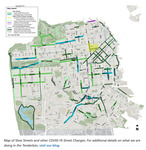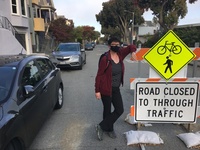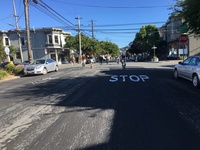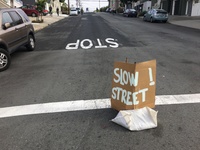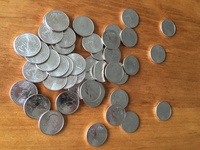 |
| Angelika/Mike Schilli |
|
|
|
Michael Due to the lack of entertainment options during Corona, many residents in our neighborhood have, just like us, adopted the habit of daily extended walks through city streets. It is not easy to maintain social distancing etiquette on busy and narrow sidewalks, though, and the city came up with the new idea of declaring select streets as "slow" and allow pedestrians to use the road as well.
It didn't take long and the bureaucrats at SFMTA, San Francisco's Municipal Transportation Agency, responsible for street construction, maintenance and parking tickets, called out a city wide Slow Streets Program. At every intersection with other city streets, those slow streets then received big signs declaring "Road Closed To Through Traffic", indicating that only residents and their visitors could use them, but not drivers just crossing through.
However, the concept of virtually car-free streets was news to many locals here, and confused residents turned to the neighborhood forum app "Nextdoor" to inquire whether it was still okay to drive their own cars into their garages if they lived on one of the slow streets. Also, some stubborn sports car driving non-residents didn't seem to think the signs applied to them and drove through the slow sections anyway. In the Mission district, mainly home to immigrants from Mexico and Middle America, some signs mysteriously disappeared overnight, others were found kicked to the curb.
In the meantime, the new ordinance has reported a fairly high acceptance rate, although some slow street residents have voiced complaints about overzealous pedestrians yelling at them when they're driving up to their residences. Especially the more affluent neighborhoods have embraced the concept, and it's a joy to see families with small children, the latter riding around on city streets on their tiny bikes, which would be otherwise unthinkable in San Francisco. You can see adults jogging, riding skateboards and bicycles, using the entire width of the road. In less well off neighborhoods, like the Mission, as well as the less densely populated ones, like the Richmond or Sunset, the program is partially ignored, and as a pedestriant, you have to watch out or be run over by speeding cars.

